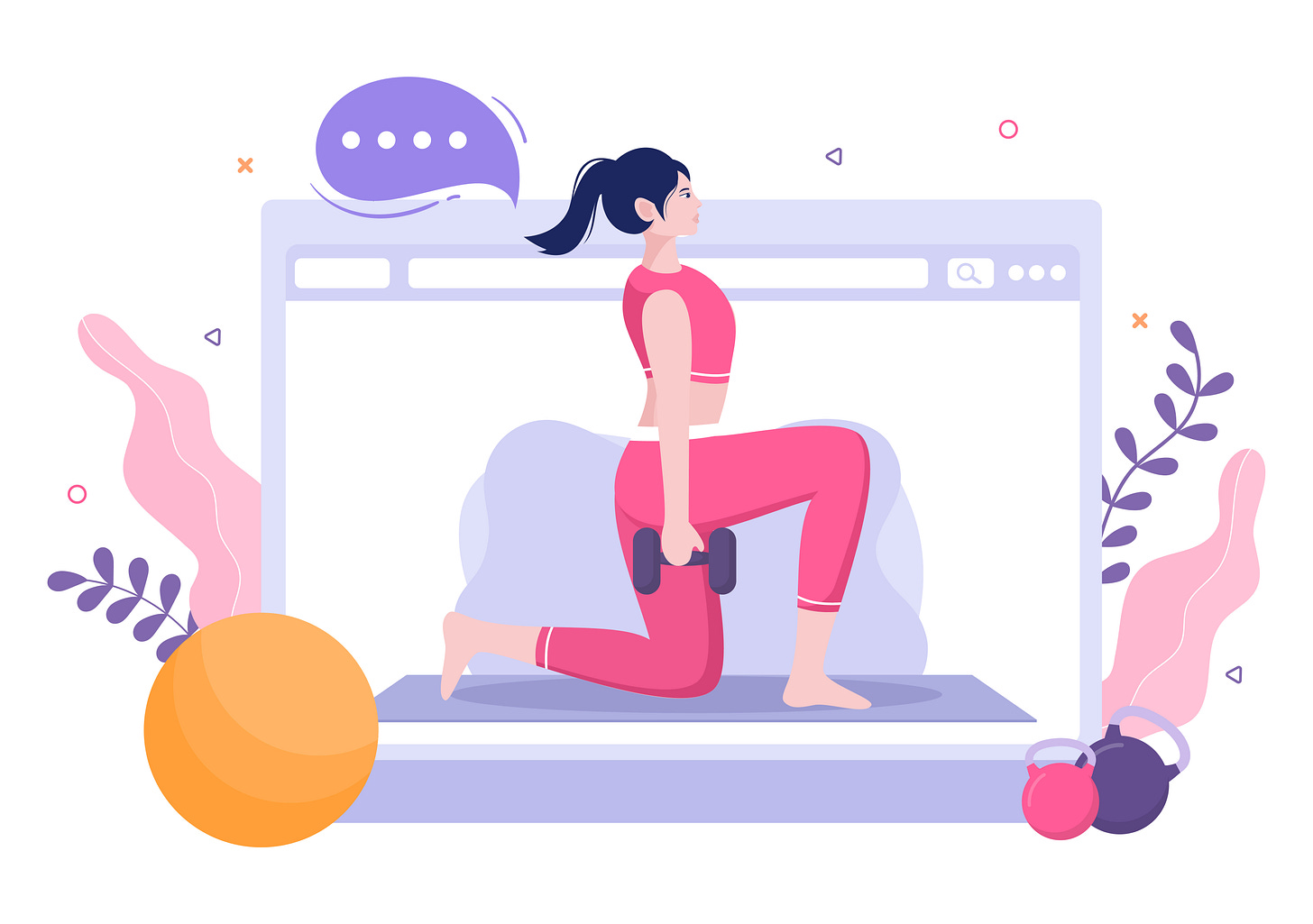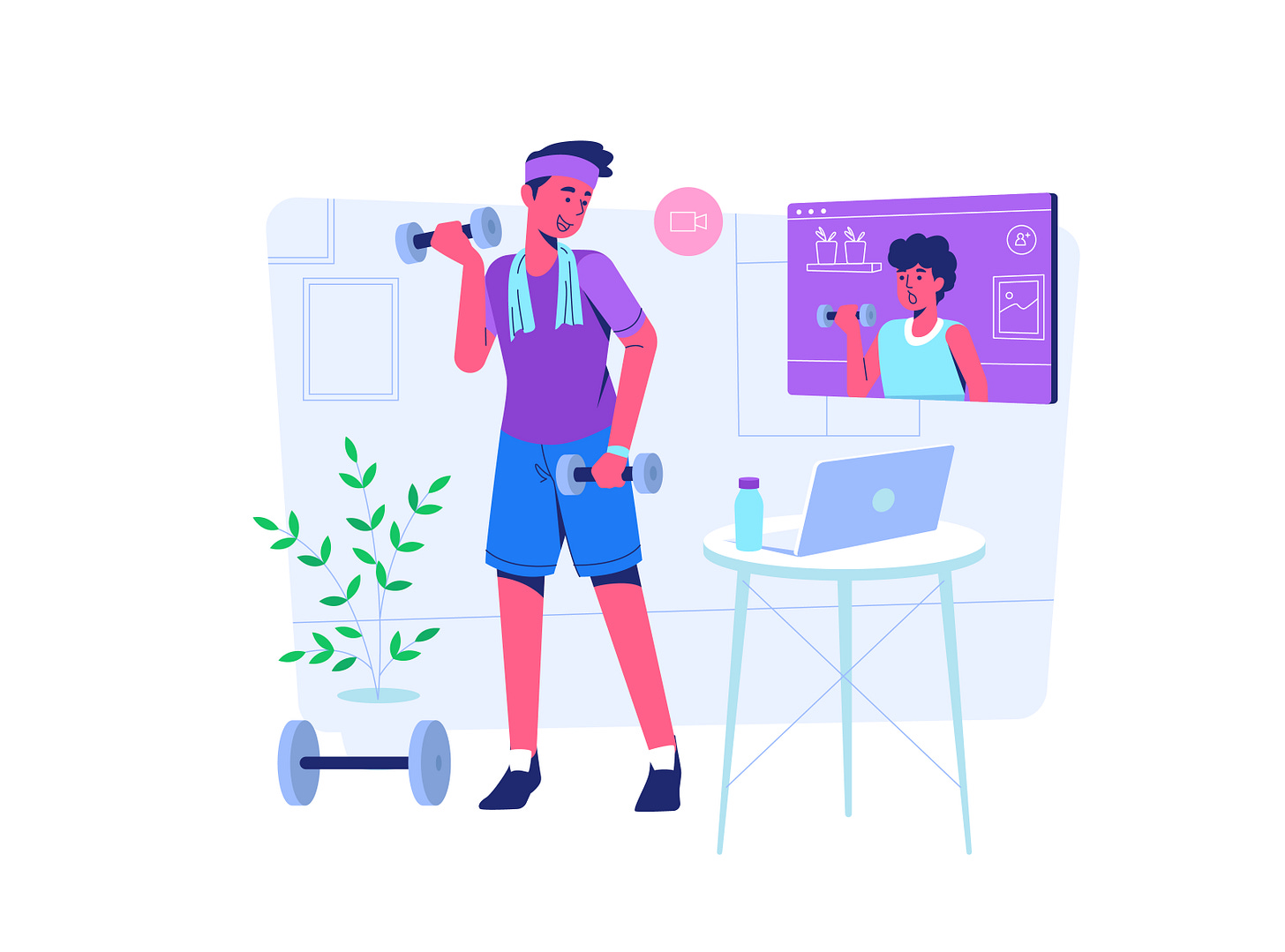Get Fit with AI: Workouts, Motivation & Fact-Checking
Discover the power of AI for achieving your fitness goals with personalized workouts, motivation, and fact-checking.
Fitness is personal—what works for one person might not work for another. Some people thrive on strict workout plans, while others need flexibility. Some are motivated by tracking progress, while others just want to stay active without overthinking it.
This is where large language models (LLMs) like ChatGPT, Claude, or Google Gemini can come in handy. They aren’t personal trainers, and they can’t hit the gym for you, but they can help with structuring workouts, staying accountable, and sorting fact from fiction when it comes to fitness advice.
In this article, we’ll explore three ways AI can support your fitness journey:
Creating personalized workout plans based on your goals, schedule, and available equipment.
Providing motivation and accountability to help you stay consistent.
Helping you fact-check fitness information so you don’t fall for bad advice.
Whether you're looking for fresh workout ideas, a little extra motivation, or just some clarity on what actually works, LLMs can be a useful tool in making fitness more manageable and personalized. Let’s take a look at how they can help.
Personalized Workout Plans with LLMs
One of the biggest challenges in fitness is figuring out what to do. There are endless workout plans online, but many are too advanced, too basic, or simply don’t fit your schedule or equipment. Personal trainers can be a fantastic resource for guidance and accountability, but they aren’t always accessible due to cost, time constraints, or availability. This is where LLMs can fill the gap—offering a lower-cost, interactive alternative that can still provide tailored workouts and adapt as your fitness level changes. While AI can’t replace the expertise of a human trainer, it can help you create structured, personalized workout plans without the financial commitment.
How LLMs Can Help
Pre-made workout plans don’t always fit your needs. LLMs let you create a plan that matches your exact situation. Whether you’re working out at home with minimal equipment, balancing a tight schedule, or working around past injuries, AI can help.
Say you’re a beginner who just bought a pair of dumbbells and wants to start strength training. Instead of searching through a dozen different fitness blogs, you can simply ask, “Create a 30-minute beginner dumbbell workout focused on full-body strength.” The AI can instantly provide an easy-to-follow plan, which you can refine further by saying, “I only have time for 20 minutes. Can you modify this?” or “Can you swap out squats for something easier on my knees?”
For those who already have an established fitness routine, LLMs can also add variety, prevent boredom, and adjust as your goals evolve. Need a five-day muscle-building program? You can ask for one that includes progressive overload. Want to balance running with strength training? The AI can generate a plan that makes space for both.
Ultimately, the biggest advantage is flexibility—you’re not locked into a rigid program or forced to follow a one-size-fits-all routine. The AI can keep up with you as your needs change, offering guidance that adapts in real time
.
Example Prompts to Try:
“I have 20 minutes and no equipment. Can you design a full-body workout that includes both strength and cardio?”
“Make me a 5-day gym workout plan focused on muscle building with progressive overload.”
“Modify this workout for someone recovering from a knee injury and who still wants to build leg strength.”
“I used to lift weights but had a shoulder injury. Can you suggest a workout that avoids overhead movements?”
“My back has been giving me trouble, but I still want to build core strength. What exercises can I do that won’t make it worse?”
Making Prompts Even Better
For even more tailored responses, try including specific details about your fitness level, past injuries, and personal preferences:
“I’m a beginner who struggles with motivation. Can you give me a simple 3-day workout plan with variety so I don’t get bored?”
“I’m training for a 5K but only have time for three workouts a week. Can you suggest a running and strength plan?”
“I’m 45 and recovering from a knee surgery. Can you design a low-impact strength and flexibility routine that avoids deep squats?”
Want to get even better AI responses? Give it a role to play. Instead of just asking for a workout, say, “Act like a certified strength coach and create a progressive 4-week plan for a beginner lifter.” That little tweak makes a big difference—the AI shifts from a generic assistant to a specialist, giving you more structured, expert-level advice.
If you want to dive deeper into why personas work and how to use them effectively, check out this article:
A Quick Word on Safety
AI-generated workouts are a solid starting point, but they’re not a replacement for expert advice. Got an injury or a medical condition? Check with a pro before diving in. And no matter what—listen to your body. Pain isn’t progress.
But staying consistent is just as important as starting strong. That’s where AI can help with accountability and motivation—helping you track progress and stay on course even when motivation dips.
LLMs for Accountability and Motivation
How LLMs Can Help Keep You on Track
Staying on track is half the battle. LLMs can’t nag you to work out (yet), but they can help you build a solid tracking routine. Whether it’s logging workouts, setting goals, or spotting patterns in your progress, AI can keep things organized—so you don’t have to. For example, you can ask:
“Help me create a simple workout tracking system I can use in a journal or app.”
“I want to work out three times a week. Can you structure a plan to help me stay consistent?”
“I’ve missed workouts two weeks in a row. What adjustments should I make to get back on track?”
Additionally, foundation model providers like OpenAI are developing tools that expand these capabilities. Features like ChatGPT’s new task function aim to introduce real-time reminders and follow-ups, allowing AI to take on a more active role in helping users stay accountable. If you’re interested in what’s coming next, you can check out more about these features here.
Motivation, Your Way
Motivation isn’t one-size-fits-all. Some people need a cheerleader, while others want a no-excuses, tough-love coach. The good news? AI can match your style, so you get motivation your way. Here are some ways to tweak it:
“Act like a motivational coach and give me a daily pep talk before my workout.”
“Encourage me in the style of a drill sergeant who won’t accept excuses.”
“Send me an inspiring message every morning that relates to fitness and perseverance.”
“When I complete a workout, respond with a celebration like a hype man.”
Need a little extra push on lazy days? Try these:
“If I say I don’t feel like working out, hit me with a comeback that gets me moving.”
“When I try to skip a session, remind me why I started in the first place.”
A Quick Reality Check
AI can give you a push, but it won’t get you off the couch. Motivation has to come from you. The best way to stay accountable? Build a routine that actually fits your life. AI is here to help—but in the end, you do the work.
Using LLMs to Fact-Check Fitness Information Responsibly
The internet is packed with fitness advice—some good, some sketchy, and some that’ll have you doing upside-down pushups on a stability ball because some influencer swore it’s the secret to six-pack abs. With so much conflicting info, it’s hard to tell what’s real. LLMs can help sort through the noise, but they aren’t fitness gurus. AI sometimes gets things wrong (and says them very confidently), so fact-checking is still a must.
That’s why verifying sources and using AI responsibly is critical when researching fitness topics. Instead of asking AI for a simple yes/no answer, you can use it as a research assistant to gather perspectives, summarize evidence, and cross-check claims.
How to Use LLMs for Smarter Fitness Research
If you’re trying to get reliable fitness information, the best approach is to ask AI to find sources rather than generate answers from its own training data. Here are some ways to do that:
“Search the web and summarize the latest research on whether stretching before a workout prevents injuries.”
“Find three peer-reviewed sources that discuss the effectiveness of intermittent fasting for muscle gain.”
“Summarize both supporting and opposing views on whether fasted cardio burns more fat.”
“What are common red flags that indicate a fitness claim might be pseudoscience?”
If you're reading an AI-generated summary, a follow-up question can help assess credibility:
“What are the sources for this information? Provide links.”
“Which of these sources are from academic journals or government health agencies?”
Search-Enabled AI vs. Research-Oriented AI
Not all AI models are built the same. Some can pull fresh info from the web, while others dig deeper and piece together research from different sources.
Search-Enabled AI (ChatGPT, Gemini, DeepSeek) – These models can pull in fresh information from the web. However, results depend on the search engine used and the model's ability to summarize correctly.
Research-Oriented AI (Perplexity, Google DeepResearch, ChatGPT with Deep Research) – These tools can go beyond basic search by analyzing multiple sources, comparing information, and citing references more transparently. OpenAI is also adding research features to lower-tier ChatGPT plans soon, further expanding access to these capabilities.
If you're serious about fact-checking, choosing the right AI tool makes all the difference. Instead of asking a static model for fitness facts, opt for one that can retrieve and verify sources in real time.
Regardless of the model you use, keep these golden rules in mind:
Check sources – Trust government agencies, academic journals, and credentialed experts over random blog posts.
Compare perspectives – Fitness science changes all the time. What was true five years ago might be outdated now.
Watch out for overconfidence – If AI sounds a little too sure of itself, dig deeper. Even the best models can get things wrong.
By asking clear questions and verifying sources, you can use AI to navigate the fitness landscape with confidence—without falling for misinformation.
AI as a Fitness Companion, Not a Replacement
AI won’t pump iron for you, tie your shoelaces, or drag you to the gym—but it can make fitness easier to manage (and maybe even a little more fun). Whether you’re using LLMs to build workouts, stay on track, or double-check fitness advice, AI can be a solid workout buddy—as long as you’re still the one putting in the work.
At the end of the day, fitness is personal, and what works best is the system you’ll actually stick to. If AI helps you stay engaged, motivated, and informed, it’s worth exploring.
If you’re curious to see how AI can support your fitness goals, try one of the example prompts from this article and see what it comes up with!






